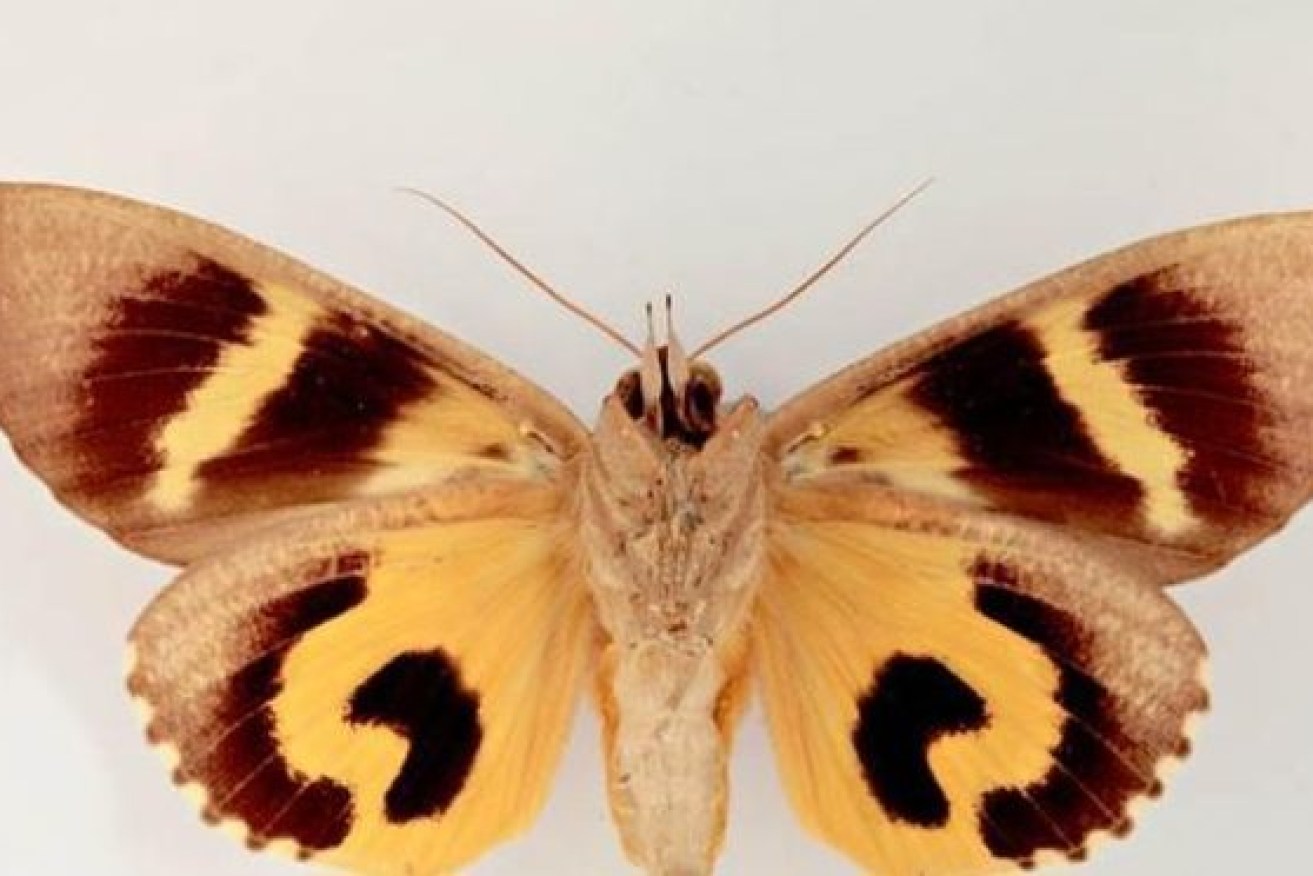Meet the monster moth that’s been snacking on our fruit trees
A nocturnal moth with a proboscis tough enough to penetrate fruit has been feasting away on home orchards, much to the dismay of gardeners and growers.

The moth's drill-like proboscis opens fresh produce up to all sorts of other nasties. Photo: ABC
To their puzzlement and dismay, gardeners and growers in Queensland have been waking up to discover their fruit on the ground, ruined.
The culprit, experts believe, is a nocturnal fruit-piercing moth with a drill-like proboscis that allows it to feast on the nectar-like juice inside the fruit.
Mary Valley gardener Vivienne Wynter said she first noticed the phenomenon two weeks ago in her home orchard.
“My husband discovered them when he came home late from work one night and saw all these little pinpricks of red gold light near our fruit trees,” Wynter said.
“When we went out with a torch to investigate, there were these really large moths — three or four of them attached to every piece of fruit.
“The next morning all the ripe fruit was dropped on the ground and it was all dry.”
Determined to save some of the remaining immature fruit, Wynter covered the trees with mosquito nets.
‘And it’s got teeth’
Queensland Museum’s senior curator of insects, Dr Chris Burwell, says he has been getting inquiries from the public and colleagues about the moths.
He believes the one causing the damage and heartache is the Eudocima fullonia.
“The tip of that proboscis is really hardened and stout — and it’s got teeth — and they can actually pierce the skin of fruit, and they’re basically feeding on the juices of the fruit.”
Once the skin is broken the fruit becomes an easy target for other garden nasties.
“The worst thing is that those little puncture wounds are an entry point for bacteria and fungi that can get into the fruit,” he said.
“They cause rot which spreads through the whole fruit, causing it to drop off the tree.”
Just look for the glowing red eyes
While the moths are typically tropical insects, they can be fairly widespread.
They are found from the Northern Rivers in New South Wales, along Queensland’s east coast and across northern Australia.
Burwell said the moth might be in plague proportions now for the same reason as butterflies.
“We had a prolonged drought followed by some really fantastic rains in early February,” he said.
The Queensland Department of Agriculture said there is no chemical way to deal with the moths, although certain wasps do target them in summer months.
The department suggests using a bright torch at night to check on the trees — the moths’ eyes glow red in the light.
– ABC / Annie Gaffney and Letea Cavander












